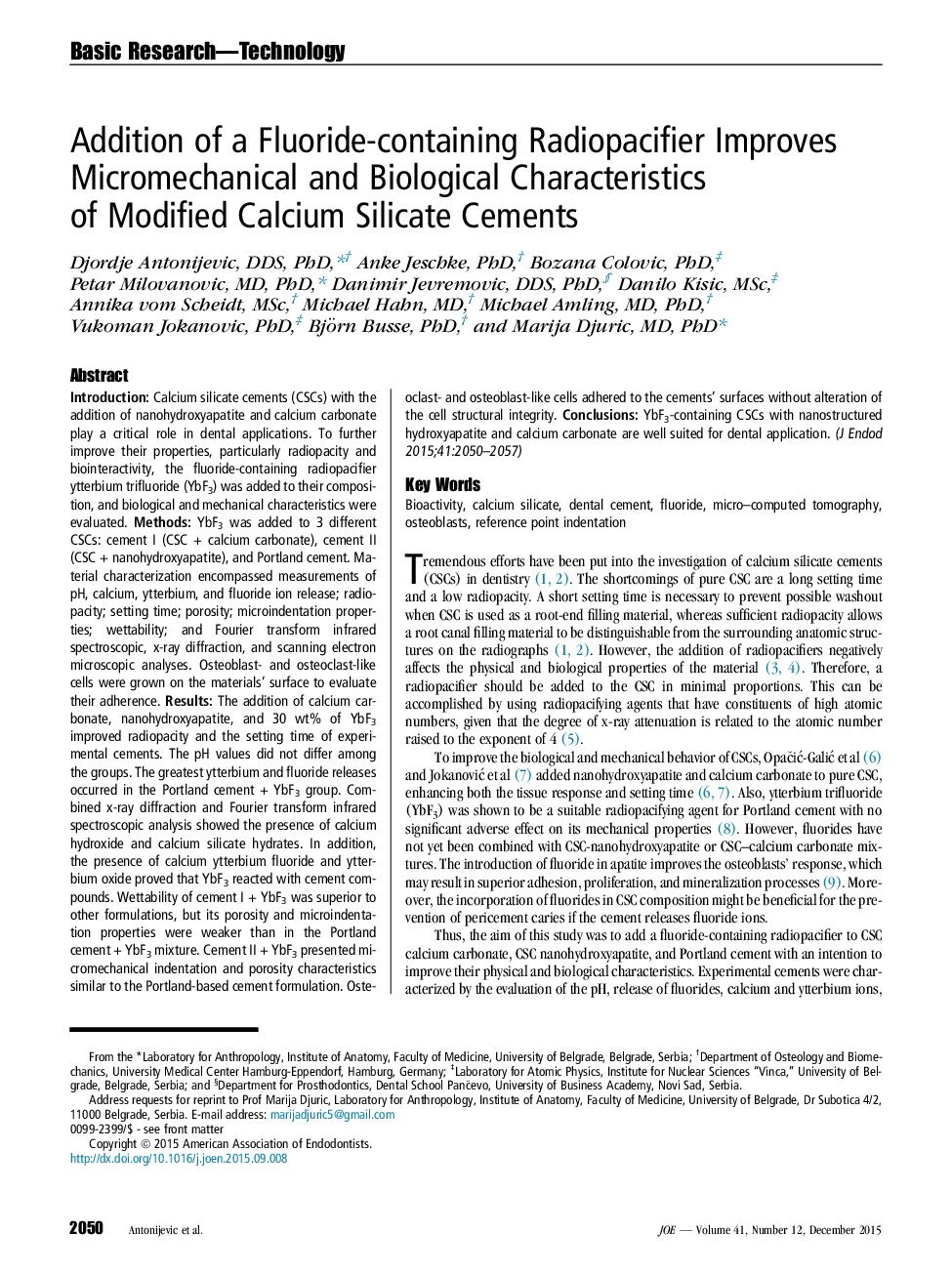| Article ID | Journal | Published Year | Pages | File Type |
|---|---|---|---|---|
| 3150232 | Journal of Endodontics | 2015 | 8 Pages |
•The fluoride-containing radiopacifier ytterbium trifluoride was incorporated into nanohydroxyapatite-modified and calcium carbonate–modified calcium silicates.•Physicochemical properties of the cements were assessed by microstructural and micromechanical analysis and by measuring radiopacity, setting time, pH, and ion release.•Biological properties were investigated by seeding osteoblast- and osteoclast-like cells on the cement surface.•Experimental cements experienced reduced setting time, improved radiopacity and wettability, and satisfactory micromechanical and biological characteristics.•Ytterbium fluoride–containing calcium silicates with the addition of nanohydroxyapatite and calcium carbonate are promising candidates for dental application.
IntroductionCalcium silicate cements (CSCs) with the addition of nanohydroxyapatite and calcium carbonate play a critical role in dental applications. To further improve their properties, particularly radiopacity and biointeractivity, the fluoride-containing radiopacifier ytterbium trifluoride (YbF3) was added to their composition, and biological and mechanical characteristics were evaluated.MethodsYbF3 was added to 3 different CSCs: cement I (CSC + calcium carbonate), cement II (CSC + nanohydroxyapatite), and Portland cement. Material characterization encompassed measurements of pH, calcium, ytterbium, and fluoride ion release; radiopacity; setting time; porosity; microindentation properties; wettability; and Fourier transform infrared spectroscopic, x-ray diffraction, and scanning electron microscopic analyses. Osteoblast- and osteoclast-like cells were grown on the materials' surface to evaluate their adherence.ResultsThe addition of calcium carbonate, nanohydroxyapatite, and 30 wt% of YbF3 improved radiopacity and the setting time of experimental cements. The pH values did not differ among the groups. The greatest ytterbium and fluoride releases occurred in the Portland cement + YbF3 group. Combined x-ray diffraction and Fourier transform infrared spectroscopic analysis showed the presence of calcium hydroxide and calcium silicate hydrates. In addition, the presence of calcium ytterbium fluoride and ytterbium oxide proved that YbF3 reacted with cement compounds. Wettability of cement I + YbF3 was superior to other formulations, but its porosity and microindentation properties were weaker than in the Portland cement + YbF3 mixture. Cement II + YbF3 presented micromechanical indentation and porosity characteristics similar to the Portland-based cement formulation. Osteoclast- and osteoblast-like cells adhered to the cements' surfaces without alteration of the cell structural integrity.ConclusionsYbF3-containing CSCs with nanostructured hydroxyapatite and calcium carbonate are well suited for dental application.
